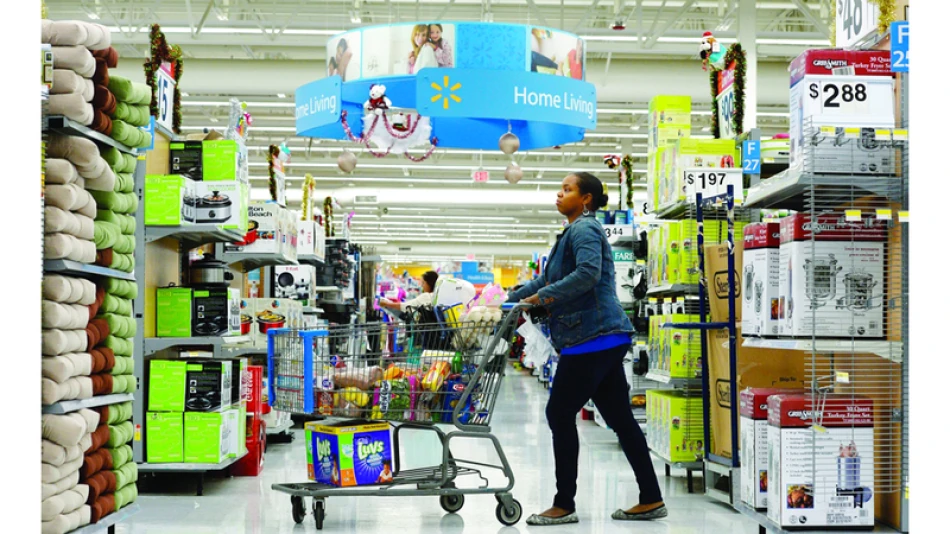
Struggling to Make Ends Meet: America's Low-Income Families Face Mounting Challenges
America's economy is splitting into two distinct worlds. While wealthy Americans continue their spending sprees fueled by record-breaking stock markets, lower-income families are cutting back on essentials as inflation and slowing wage growth squeeze their budgets. This divide now shapes everything from airline seating to fast-food visits, creating an economy that looks healthy on paper but hides growing financial stress for millions.
The contrast plays out starkly in Chicago. Ulysses Moreno waited two hours outside a Pilsen food pantry after losing his construction job, worried about feeding his three teenagers. "This is a lifeline for me," he said. "Our food budget doesn't stretch like it used to." Just miles away on the Magnificent Mile, luxury hotels buzz with activity and high-end restaurants stay packed.
Dr. Evelyn Figueroa, who founded and runs the Pilsen food pantry, sees this split every day. "For people like me who own homes and work, the economy is excellent," she said. "How's the economy? It depends on who you're looking at."
The numbers tell the story. Moody's Analytics found that the top 10% of American households now account for about half of all consumer spending - the highest share since the late 1980s. Consumer confidence has risen among high earners but dropped steadily among everyone else.
This isn't just about inequality anymore. It's reshaping how the entire economy works. Airlines struggle to fill cheap seats while wealthy travelers snap up expensive first-class and business-class tickets. Credit card companies compete to offer premium cards with hefty annual fees to high earners, while families with limited income fall behind on minimum payments.
Even McDonald's CEO Christopher Kempczinski noticed the trend. "Low-income consumer visits to our restaurants declined again, by double-digit percentages since the start of this year compared to the same period last year," he said in a recent interview. "This divided consumer base is why we remain cautious about the general direction of American consumers in the near term."
The pandemic briefly narrowed this gap when trillions in government aid flowed to families and businesses. Companies paid extra wages to workers who couldn't work from home. When the economy reopened, fierce competition for workers drove rapid wage growth, especially in low-paying sectors.
But as the job market cooled, low-wage workers lost most of these advantages. Hourly wages are rising more slowly for lower-paid workers, reversing the pandemic trend according to Federal Reserve data from Atlanta.
Slower wage growth combined with ongoing inflation weighs heavily on American families. More people rely on credit cards and other borrowing to pay bills. More fall behind on car loans and credit card payments. While this hasn't triggered widespread defaults or foreclosures, high debt levels mean even people keeping up with payments have little room to borrow more if living costs rise or incomes drop.
Consumer research firm Numerator shows lower-income households have cut their purchases, leaving them with little safety margin. "People are still consuming basics, but they're cutting back on all these extras they could afford after the pandemic," said the company's chief economist Leo Feler. "The situation is more dangerous because if we've already cut all the extras, the only thing left to cut is necessities."
Trump administration policies have made things worse for some communities. Farmers got hit hard by trade wars with China. Federal workforce cuts hurt northern Virginia and other areas that depend heavily on government jobs - effects made worse by recent government shutdowns. Immigration raids weigh on industries that rely on foreign-born workers and businesses that serve them as customers.
In Chicago's largely Latino Pilsen neighborhood, normally busy streets have grown quiet amid tighter immigration enforcement. Spanish-language signs remind residents of their legal rights. Local businesses report fewer customers. Figueroa said her food pantry gets more requests for grocery delivery because families fear going out.
This economic split stays largely hidden in big-picture data. Consumer spending continues outpacing inflation. Household debt levels remain manageable compared to American incomes. Measures like GDP show the economy slowing but still fundamentally sound, surprising many experts.
But this resilience increasingly depends on a limited number of well-off households. Federal Reserve economists in Boston found that consumer spending growth since 2022 "was driven by higher-income consumers." They noted that "in contrast, spending growth by lower-income consumers was much weaker."
Boston Fed study author Darren Blakey warned this creates sources of fragility. With so much reliance on high earners, the economy could suffer if stock prices fall or another shock hits. Lower-income families already face financial distress, making them vulnerable if job market weakness gets worse.
This consumer divide creates challenges for Federal Reserve policymakers. Strong consumer demand might keep pressure on prices, while tariffs fuel inflation fears. But if the Fed keeps interest rates high to fight inflation, gaps forming in the job market could widen.
Unemployment has risen gradually in recent months but remains relatively low at 4.3% in August. Hiring has slowed significantly, but companies mostly keep their workers. Mastercard chief economist Michelle Meyer warned that if businesses start making widespread cuts, the picture could turn dark quickly.
"If we actually see an increase in layoff rates, and if we see an increase in the unemployment rate, and if we see wages start to slow noticeably, then I think even if household support continues, the line changes very quickly," she said.
Most Viewed News

 Sara Khaled
Sara Khaled






